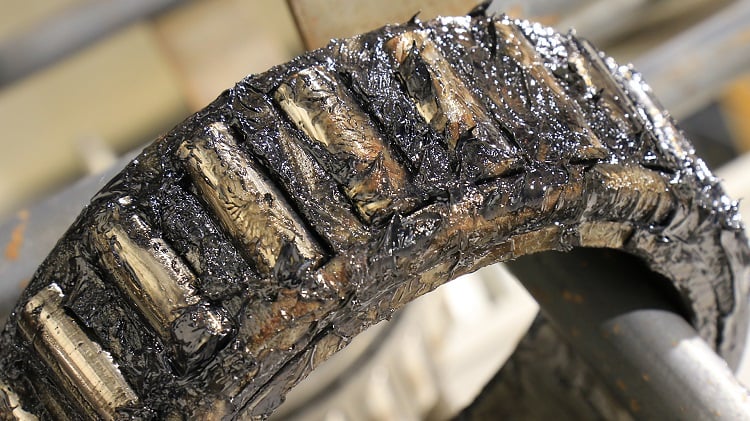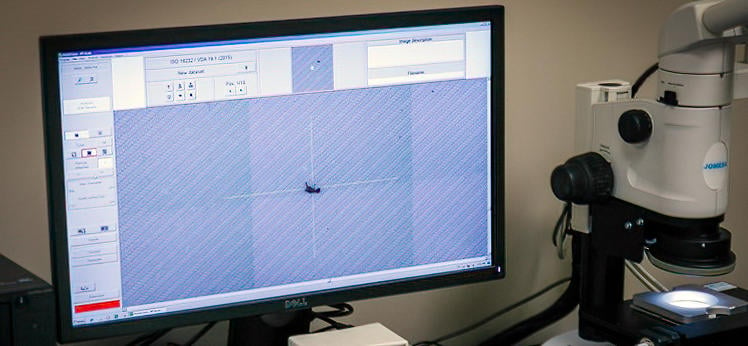When the time comes to look for an industrial parts washer, plenty of options are available depending on the application. Many types of aqueous cleaning equipment exist, such as cabinets, conveyors, or immersion parts washers, with systems operating in batch or continuous processes. While the type of equipment may differ from one application to another, many characteristics are shared. In this blog, I provide guidance on some part washer features and specifications to help choose the optimal equipment.
WASH PUMP
Perhaps the most component for aqueous cleaning equipment is the pump. Firstly, the pump's flow rate determines the amount of cleaning fluid directed to the part. The flow, combined with exposure time and temperature, allows the cleaning detergent to dissolve oil/grease and flush contaminants from the part surface.
Pressure also plays an essential role in aqueous cleaning. For most new manufacturing applications where the contaminants to be removed are loose chips and coolant, a pump pressure between 30 to 60 psi is sufficient. For tenacious soils found in remanufacturing applications, more pump pressure, say 100-200 psi, increases spray impingement and thereby improves the machine cleaning ability.
Using vertical seal-less centrifugal pumps dramatically reduces maintenance costs and risks of failure. Vertical pumps have the advantage of being more compact than horizontal ones. They typically do not require draining the solution tanks for maintenance operations, and, most importantly, their immersed wet-end eliminates any risk of leaks or solution spills onto the floor.
SOLUTION TANK DESIGN
A solution tank's size is important to consider so as to avoid frequent solution changes as these are probably most costly maintenance task when operating a parts washer. Tank size can also impose limits on agitation, which can lead to excessive foaming.
Moreover, if the tank is too small, the soil removed from the part contaminates it quickly, resulting in a machine that is attempting to clean dirty parts with a dirty solution! Soils also significantly affect the detergent or cleaning chemical's efficiency, reducing the overall parts washer efficiency.
Insulating a solution tank helps to prevent heat loss to save on energy costs. Adding oil separation accessories such as an oil skimmer or coalescer can be beneficial as these remove free oils from the solution thereby increasing detergent efficiency.
HEATING METHODS FOR AQUEOUS WASHERS
The most popular heating methods for aqueous washers are electricity and gas, with the utility cost usually the main deciding factor. An electric heating system has a low upfront cost but over the long term can prove to be more costly to operate than a gas heating system. A gas heating system is more expensive upfront both in equipment and connection of services.
The total heating capacity has a direct impact on the performance of the equipment. In normal operation, the heating system must account for the following:
- Heat required to raise the solution to its operating temperature
- Heat to raise the workpiece temperature to the operating temperature
- Heat lost to exhaust ventilation through both spray atomization and new air entering the spray chamber – see blog Effect of Machine Size, Flow, and Pressure in Cleaning
- Heat lost through tank and canopy walls
- Heat to raise the temperature of the water entering the tank to make up the solution level.
REGENERATIVE BLOWER
A regenerative blower is commonly used in parts washers. It delivers higher air pressure than traditional fan blowers, providing a heated, high–velocity airflow through an air knife to effectively remove moisture from the workpieces.
MACHINE CONSTRUCTION
Carbon steel is typically used and provides reasonable corrosion resistance, providing that the pH of the solution remains above 10.5. Stainless steel 304L provides better corrosion resistance across a broader pH range – from mildly acidic to highly caustic.
For tough cleaning specifications (less than 1 mm particle size), stainless steel is the best choice to avoid any corrosion or scale deposits on the workpieces.
The thickness of the material used to construct the machine ensures the washer can withstand loads and wear. A rigid construction better absorbs vibration and noise. Thicker platework is ideally suited for heavy-duty applications and offers long-lasting durability.
SOLUTION FILTRATION
For applications with particulate cleanliness requirements, the use of filtration is necessary. The filtration role is to capture particles at the pump outlet – permitting the clean solution to reach the workpieces. Bag filters are generally used for their cost-effectiveness. Cartridge filters provide more efficient filtration for applications with stringent cleanliness requirements.
FIXTURES & AUTOMATION
When parts have complex features, fixtures help position workpieces in the optimal position for cleaning and drying. For cleaning, fixtures allow for dedicated nozzles or flushing mechanisms to target critical areas and remove trapped contamination. For drying, the fixture design can position the parts to favor drainage and allow for dedicated blow-off devices to remove liquid from specific features.
Fixtures also offer precise positioning for applications requiring automated loading and unloading and handshake with robotic devices.
WORKPIECE COOLING
There is no disputing the role of heat in the efficiency of aqueous cleaning. However, the temperature of parts exiting the cleaning process can also be problematic for downstream processes or handling.
Leak testing and gauging are typical operations after cleaning. These operations are highly dependent on geometric variations that occur as parts cool to ambient temperature. Sometimes incorporating a cooling tunnel is necessary to bring the part temperature to the acceptable range if staging is not possible.
In conclusion, there are many characteristics to look at when purchasing a parts washer. When comparing different options, taking the time to compare key elements of design and construction will help you select the correct option for your needs.



